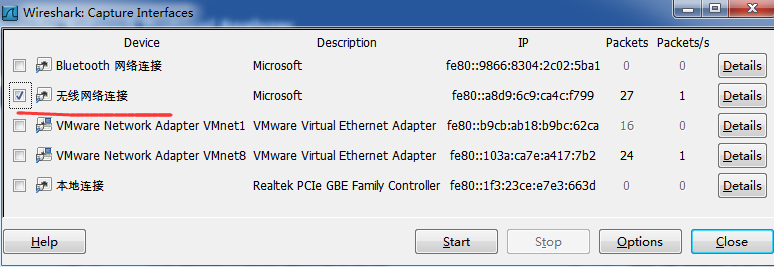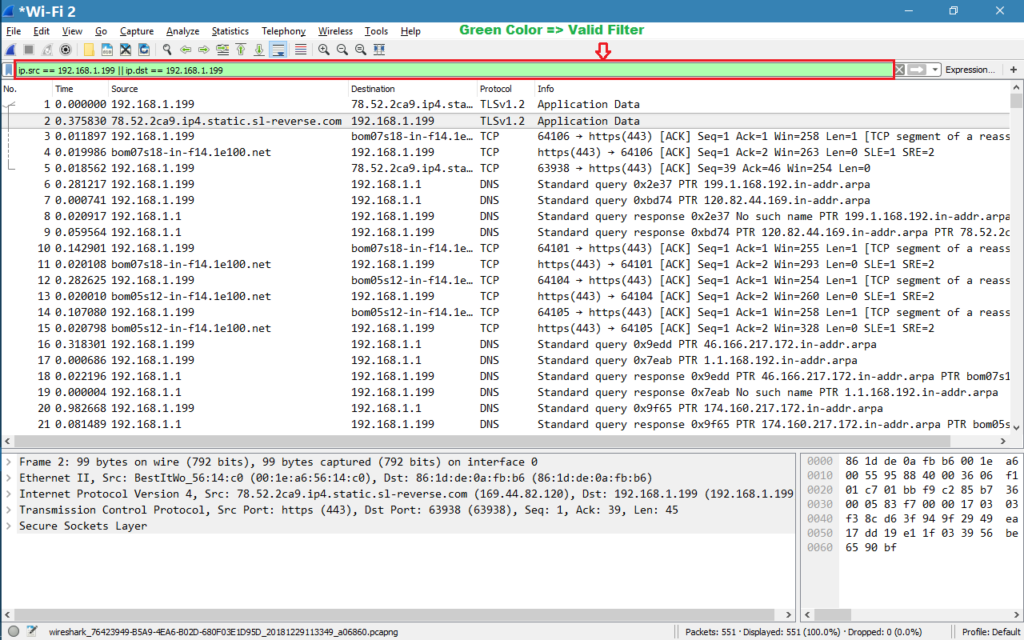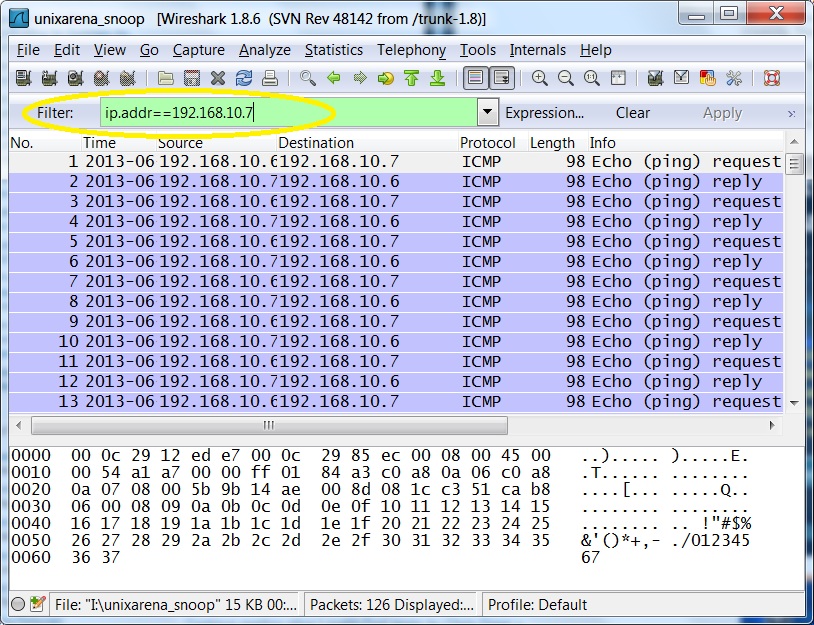
This is useful if you want to look for specific machines or networks. Sets a filter for any packet with x.x.x.x, as either the source or destination IP address. The auto complete guesses are also there to help you put together new combos of filtering. This works on a live capture, as well as in files of dates you might be importing.Īlso, as you type, notice the color of the text field changes from red to green, signaling when you have a valid filter. You can type filter syntax right into this field and watch in wonder as your once jumbled pile of messages transforms into a neat clean stack ordered how you tell it.

The most visible and easy to use spot is right in front of you! You can compare values in packets, search for strings, hide protocols you don't need, and so much more.

Thankfully, Wireshark includes a rich yet simple filter language that allows you to build quite complex expressions. Moving into larger wireless networks, the sheer amount of broadcast traffic alone will slow you down and get in your way. Working from this mess would be a headache! Servers are broadcasting, computers are asking for webpages, and on top of this, the colors are difficult to digest with confusing number sequences to boot. When you first fire up Wireshark, it can be daunting. I am simply using filters to manage the view. All examples below are from a 10 minute period of packet capture on my lab network. Sometimes, the hardest part about setting a filter in Wireshark is remembering the syntax, so below are the top display filters that I use. You can filter on just about any field of any protocol, even down to the hex values in a data stream. The filtering capabilities here are very comprehensive. Now, I'd like to dive right back into Wireshark and start stealing packets. The graph, as shown in Figure 6, depicts the result of the HTTP responses (delta time).In my Wireshark article, we talked a little bit about packet sniffing, but we focused more on the underlying protocols and models. Step 7: In order to display only the HTTP response, add a filter http.time >=0.0500 in the display filter. Step 6: To calculate the delta (delay) time between request and response, use Time Reference ( CTRL-T in the GUI) for easy delta time calculation. > I/O graph Figure 6: Visualisation of HTTP responses

Syntax: http.time >= 0.050000 Figure 5: Statistics. Step 5: Create a filter based on the response time as shown in Figure 4, and visualise the HTTP responses using an I/O graph as shown in Figure 5. Procedure: Right-click on any HTTP response packet -> Protocol preference -> uncheck ‘Reassemble HTTP headers spanning multiple TCP segments’ and ‘Reassemble HTTP bodies spanning multiple TCP segments’.If ‘Allow sub-dissector to reassemble TCP streams’ is on and the HTTP reassembly preferences have been left at their defaults (on), http.time will be the time between the GET request and the last packet of the response.If the TCP preference ‘Allow sub-dissector to reassemble TCP streams’ is off, the http.time will be the time between the GET request and the first packet of the response, the one containing ‘OK’.Go to Protocol preference and then uncheck the sub-dissector to reassemble TCP streams (marked and shown in Figure 3). Step 4: In order to view the response of HTTP, right-click on any response packet (HTTP/1.1). Syntax: ip.addr= 91.198.174.192 & ip.addr = 192.168.155.59 Figure 3: Allow sub-dissector to reassemble TCP streams Figure 4: Response time
#WIRESHARK CAPTURE FILTER FOR PING PC#
Start filtering the IP of (a simple traceroute or pathping can reveal the IP address of any Web server) and your local PC IP (a simple ipconfig for Windows and ifconfig for Linux can reveal your local PC IP). Step 3: We now filter the requests and response sent from the local PC to Wikipedia and vice versa.

Now filter all the HTTP packets as shown in Figure 2, as follows: syntax: http ‘200 OK’ implies that the response contains a payload, which represents the status of the requested resource (the request is successful). Step 2: Here, we make a request to and, as a result, Wikipedia sends an HTTP response of ‘200 OK’, which indicates the requested action was successful. Figure 1: Interface selection Figure 2: Filtering HTTP Refer to the bounding box in Figure 1 for available interfaces. Step 1: Start capturing the packets using Wireshark on a specified interface to which you are connected.


 0 kommentar(er)
0 kommentar(er)
